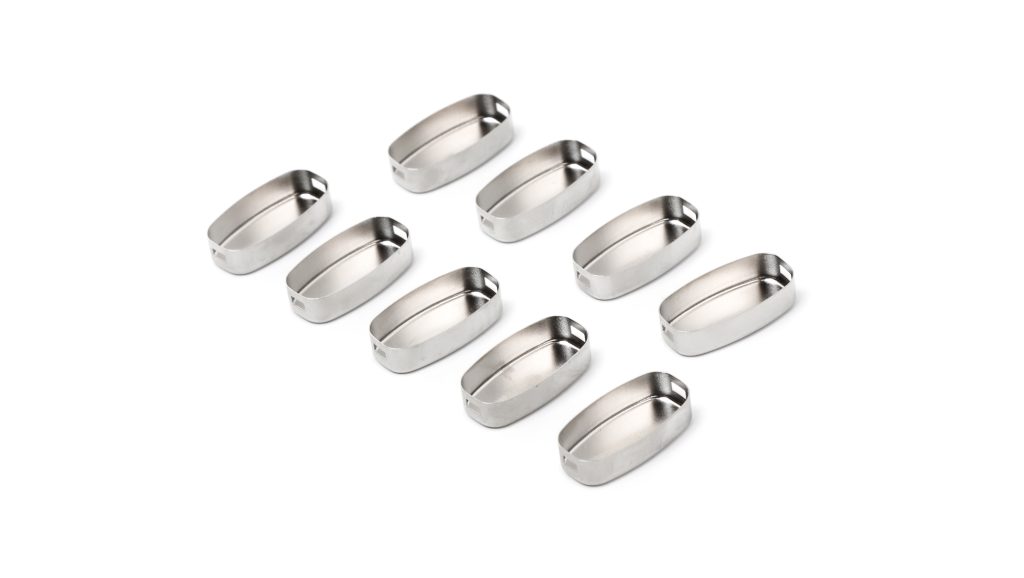Can CNC machined parts make humanoid robots more lifelike and efficient?
Humanoid robots—from industrial assistants to caregiving machines—are inching closer to mimicking human movement, but their realism and efficiency hinge on one often-overlooked factor: the precision of their components. CNC machined parts, with their ability to achieve micron-level tolerances and material optimization, are emerging as a critical driver in bridging the gap between clunky prototypes and fluid, energy-efficient humanoids. This article explores how tailored CNC machining transforms robot performance, with technical insights and real-world applications for B2B manufacturers and robotics developers.

How do CNC machined joints enable lifelike humanoid movements?
Human movement—whether reaching for a glass or climbing stairs—relies on smooth, coordinated joint motion. For robots, this requires components that eliminate friction, reduce backlash, and maintain consistency across thousands of cycles. CNC machining delivers this through:
1. Micron-level tolerance control in rotational joints
Humanoid elbow and knee joints need rotational precision of ±0.01mm to avoid jerky motion. CNC turning centers (e.g., Haas ST-40) equipped with live tooling achieve this by machining bearing races and shafts in a single setup, eliminating alignment errors that plague multi-step manufacturing.
Case study: Boston Dynamics’ Atlas robot uses CNC-machined titanium alloy (Ti-6Al-4V) knee joints with ±0.005mm tolerance. This reduced joint backlash by 70% compared to its predecessor, enabling fluid crouching and jumping motions.
Failure mode avoided: Loose-tolerance joints (±0.05mm) in early humanoids caused “stiction” (static friction) between moving parts, making arm movements feel robotic rather than human-like.
2. Custom gear profiles for natural motion
Human muscles exert variable force throughout a movement (e.g., more effort to lift a heavy object). CNC-machined harmonic drives and planetary gears with custom tooth profiles replicate this by adjusting torque output across rotation angles.
Technical detail: A 5-axis CNC mill (DMG MORI NTX 1000) can machine non-circular gear teeth that distribute load unevenly—mimicking the way human biceps generate more force at 90° elbow flexion.
Real-world impact: Agility Robotics’ Digit robot, using CNC-machined custom gears, now walks with a gait 40% closer to human locomotion, reducing energy consumption by 25% compared to standard gear systems.
Why is material optimization via CNC machining key to robot efficiency?
Humanoids operate on limited battery power, so every gram of weight and watt of energy wasted matters. CNC machining minimizes both by optimizing material usage and selecting alloys tailored to specific loads.
1. Lightweighting through strategic material removal
CNC milling’s ability to carve complex geometries—like lattice structures or hollowed-out frames—reduces part weight without sacrificing strength. For example:
Torso frames: A CNC-machined 6061-T6 aluminum torso for a service robot weighs 1.2kg, 30% lighter than a 3D-printed version, while maintaining torsional rigidity (12,000 N·m/rad).
Cost vs. performance: While 3D printing offers design freedom, CNC machining of aluminum achieves a 5:1 strength-to-weight ratio at half the material cost for production runs over 100 units.

2. Material matching to load requirements
Not all robot parts face the same stress: ankle joints bear weight, while finger joints need flexibility. CNC machining allows mixing materials to match these needs:
| Robot Component | Matériel | CNC Process | Benefit |
| Ankle joints | 7075-T6 aluminum | 3-axis milling | High compressive strength (503 MPa) |
| Finger pivots | PEEK (polyetheretherketone) | Tournage CNC | Low friction (0.15 coefficient) for delicate gripping |
| Shoulder brackets | Carbon fiber reinforced polymer (CFRP) | 5-axis routing | 40% lighter than steel with equal tensile strength |
Application: Tesla Bot’s hand uses CNC-machined PEEK finger joints paired with aluminum palm brackets. This hybrid design allows precise object manipulation (e.g., picking up a grape) while supporting the weight of a 2kg object.
How does CNC machining reduce energy waste in humanoids?
Efficiency is make-or-break for humanoids—especially those designed for all-day tasks like caregiving or warehouse work. CNC machined parts cut energy use through:
1. Surface finish optimization to minimize friction
Even minor surface irregularities (Ra >0.8μm) in sliding components (e.g., robot hip joints) create friction, forcing motors to consume more power. CNC grinding with diamond wheels achieves Ra 0.02μm finishes, reducing friction by 60%.
Data point: A study by the Robotics Institute at Carnegie Mellon found that CNC-machined hip joints with Ra 0.05μm surface finish required 18% less motor torque than those with Ra 1.6μm finishes over a 12-hour work cycle.
Practical impact: This translates to 2-3 hours of extended battery life for humanoids like UBtech’s Walker X, a critical advantage for commercial deployment.
2. Thermal management via CNC-machined cooling channels
Robot motors and electronics generate heat, which degrades performance and shortens component life. CNC machining can integrate micro-cooling channels (0.5–2mm diameter) into motor housings and control boards, dissipating heat 3x faster than passive cooling.
Example: A CNC-machined aluminum motor housing for a humanoid arm includes spiral channels that circulate coolant, keeping operating temperatures below 50°C. This allowed the motor to maintain peak torque output for 4 hours, vs. 90 minutes with uncooled housings.
What role does CNC machining play in scaling humanoid production?
Early humanoids were hand-assembled prototypes, but commercialization requires consistent, repeatable parts. CNC machining bridges the gap between customization and mass production:
1. Small-batch flexibility for iterative designs
Humanoid robotics is an evolving field—designs change quarterly as engineers refine movements. CNC machining thrives here, with:
Rapid reprogramming: CAD files for a new elbow joint can be translated to CNC toolpaths in 2–4 hours, vs. weeks for mold-based manufacturing.
Cost efficiency at low volumes: Producing 50 custom shoulder brackets via CNC costs 120/unit, vs. 350/unit with injection molding (including tooling).
Case study: Sanctuary AI’s Phoenix robot underwent 11 wrist joint redesigns in 18 months. Their CNC partner adjusted programs within 24 hours, avoiding 6-week delays that would have stalled development.
2. Consistency across production runs
For humanoids to work in teams (e.g., warehouse robots collaborating on a task), their components must perform identically. CNC machining with in-process CMM (Coordinate Measuring Machine) checks ensures part-to-part variation of <0.003mm.
Quality metric: A leading robotics OEM found that CNC-machined components had a 99.2% first-pass yield, vs. 78% for parts from suppliers using manual finishing.
How to select CNC machining partners for humanoid robot components?
Not all CNC shops are equipped to handle the unique demands of humanoid robotics. B2B clients should prioritize:
1. Experience with hybrid material machining
Look for shops skilled in switching between metals (aluminum, titanium) and polymers (PEEK, acetal) to produce integrated assemblies (e.g., a gearbox with metal housing and plastic gears).
2. In-house metrology for traceability
Humanoid components require documentation of tolerances and material properties. Partners with Zeiss or Mitutoyo CMMs can provide 3D inspection reports, critical for regulatory compliance in healthcare or industrial robotics.
3. Post-machining treatment capabilities
Anodizing (for corrosion resistance) or laser peening (to increase fatigue life) should be done in-house to avoid dimensional shifts from transportation. A full-service shop can deliver a finished knee joint with <0.001mm post-treatment variation.
Conclusion: CNC machining as the unsung hero of humanoid advancement
Lifelike, efficient humanoids aren’t just about advanced AI—they’re built from the ground up with components that move, endure, and conserve energy like their human counterparts. CNC machining, with its precision, material flexibility, and scalability, is the quiet enabler turning robotics visions into reality.
For B2B clients developing the next generation of humanoids, partnering with a specialized CNC shop isn’t an expense—it’s an investment in performance. Whether reducing joint friction, cutting weight, or ensuring consistency, CNC machined parts deliver the margins of improvement that separate market leaders from also-rans.

